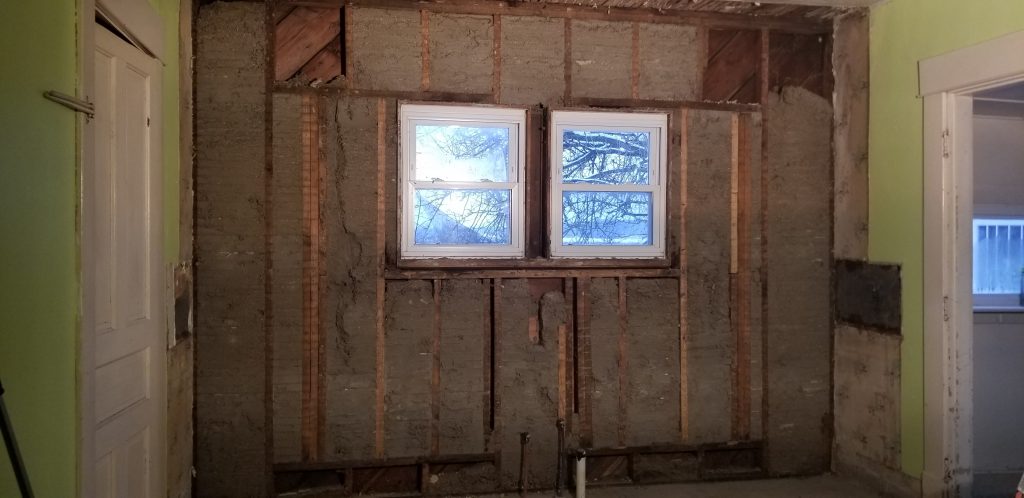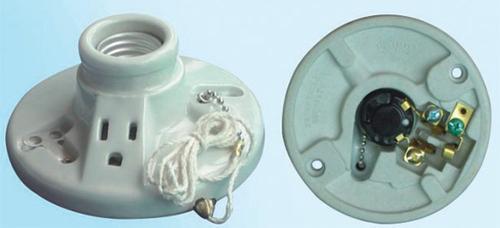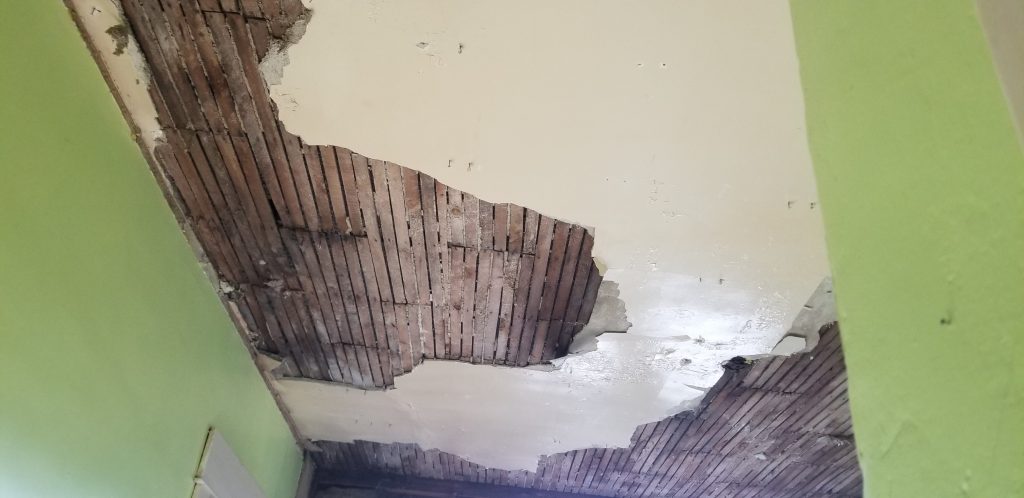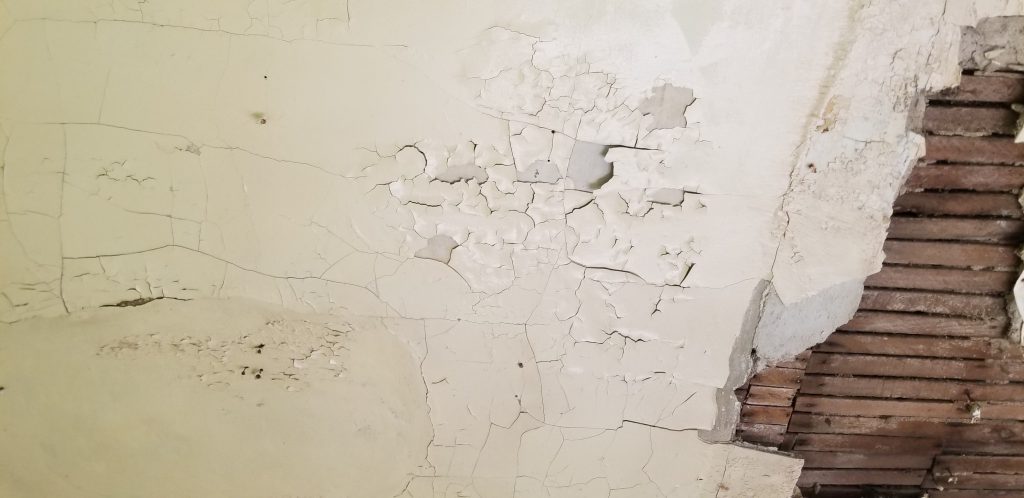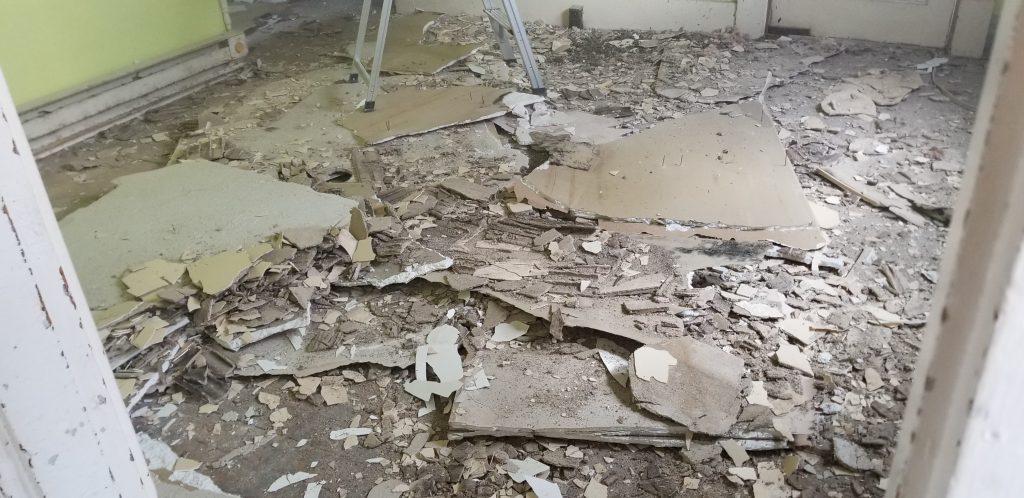It took days to do, but we finally got the lat and plaster off the south wall of the kitchen. Then, as a bonus, we ended up pulling down the drywall from the ceiling — which was the only thing holding the plaster up and the water damage hidden.
I have to admit, this place is smelling better and better with more things we remove. The bones are good, but the way that people maintained and kept up the place was just awful. There were a few interesting things here.
- Whoever installed the windows never removed the old lead weights from old style windows that used that kind of counterweight. We found 12 lead weights decaying in the walls.
- We found a part of a fence post just tucked away in the cellulose insulation — it wasn’t used as a support since it wasn’t attached to anything.
- Two empty compartments with no insulation up near the top
- Mud dabber nests in the cellulose insulation.
- The window wasn’t completely framed.
- The electrical cord that powered two outlets plus the light bar over the sink was plugged in at a light in the basement.
With the electrical set up this way, it made taking the wall out easier. I mean, we didn’t have to worry about getting into something that we shouldn’t have or burning down our house.
This is a good thing as when we were trying to figure out where the rest of the power went, we found that all the lights on the ground floor are not only knob and tube, but were on a single breaker. Lawd, how did this place not burn down before?
Lat and plaster is not a fun thing, by the way.
As we removed the wall, we discovered that water damage soaks into the lat boards. This not only continues to weaken, but also continues to grow mould. As we removed them, the smell of mould slowly cleared up. We are not looking forward to taking the lats down as the insulation underneath is a crumbling black, smelly substance. Alas, we’ll have to tackle that project after we get some attic insulation and drywall to have on standby.
The previous owners probably knew there was damage because the as the lat soaks, the plaster does as well. And it’s not like it’s not an obvious, either. Plaster becomes highly friable, cracks and crumbles with water damage.
Look closely at that drywall. Instead of using screws, they nailed the drywall up with giant nails. Straight through the plaster they were holding up, and into the lat board. Alas, it cleaned up well, and we’re now looking at a clean(ish) slate for the ceiling and one wall. Hopefully it will make it easier for the electrician to run Romex to the lights and outlets on each wall.
Fun fact: If the build is new, Indiana state code is to put an outlet on each wall. However, if it’s not, then they won’t. The general contractor told us this, so we’re highly considering ripping out the other two walls to make them modernise the whole kitchen of the house. And maybe some of the other rooms….
